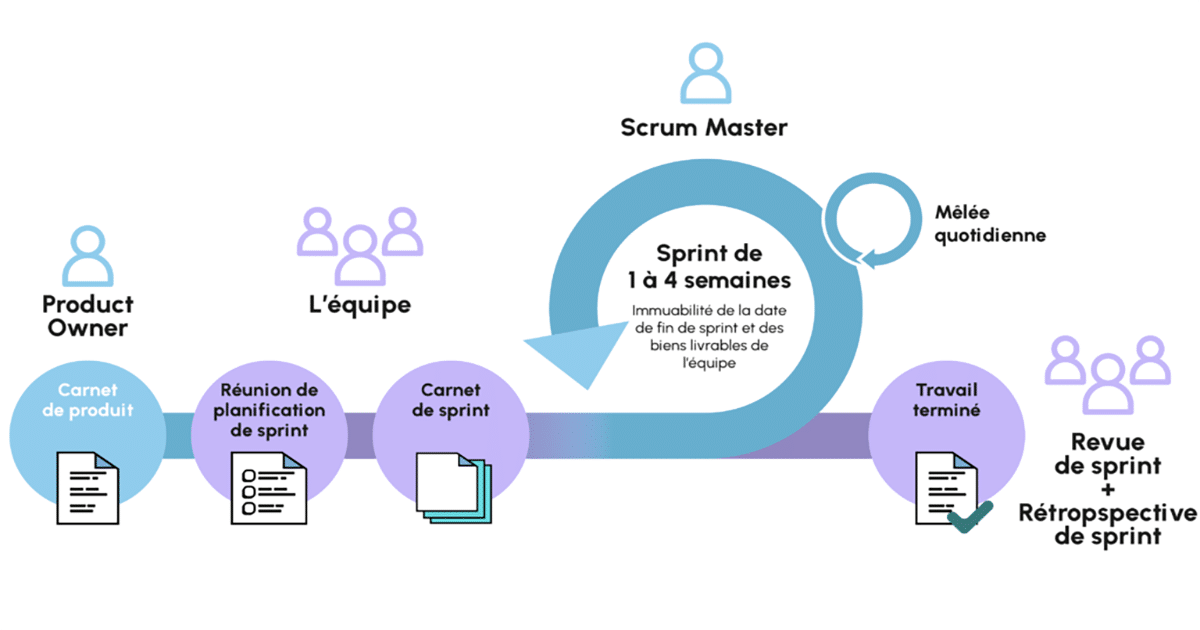The modern workplace is constantly changing, and organisations need to be prepared for change. One approach that has helped many companies become more productive is agile working, a flexible and adaptable way of working that emphasises collaboration and communication.
The idea of agile working originated in the software development industry in Japan in the 1950s but has become an increasingly popular concept in today’s workplace. It is about bringing teams together to complete projects and tasks quickly and efficiently using teamwork, innovation, collaboration, communication, and creativity.
Agile working is not just a trendy term; it has been shown to deliver real results for businesses looking to improve their productivity in the short and long term. In this article, we’ll look at how this innovative approach can help your organisation improve its efficiency, adapt to change, and ultimately achieve its goals.
The principles of agile working
The agile methodology is based on a specific philosophy. There are many principles that frame this approach and help us to understand it better.
We have four agile values:
- People and their interactions, rather than processes and tools.
- Operational solutions are more important than comprehensive documentation.
- Collaboration with the customer, rather than contractual negotiations.
- Adapting to change is preferable to following a plan.
To complement this agile model, there are 12 principles found in the agile manifesto. For example, the priority given to customer satisfaction, the importance of regular delivery, and simplification.
In summary, we can say that agile approaches are focused on collective intelligence, resilience, and practicality.
The benefits of agile working
If you choose to implement agile methods in your company, you will see benefits. Agile projects often result in the following advantages:
Reactivity to change.
Your employees become much more resilient by being open to change and the unexpected. They are less fearful and respond to change better. The company itself gains more resilience to crises because of this agility.
Increased productivity through effective communication
Since the agile approach is based on continuous exchanges, a more agile company is also a more communicative company. These qualitative and sustained exchanges encourage an increase in productivity, particularly through the effective sharing of information.
A strengthened team culture.
The collaboration of agile projects strengthens the links between employees. They learn to exchange in a more direct manner, have more confidence in themselves and can take on more ambitious challenges.
Improved satisfaction
Finally, this approach based on continuous improvement increases the quality of products and services. Customers are therefore more satisfied. Moreover, this satisfaction also applies to the teams who are more involved and motivated by the projects they take on.1
The most common agile working methods
An agile process is ideal if you want to implement an iterative approach with quick developments. There are various methodologies that deal with various problems. There isn’t a method that is superior to another. The most important thing is to pick a plan that is tailored to your requirements and the specifics of your project.
The Scrum method
Scrum is a popular project management methodology that uses short, iterative sprints to solve complex problems. Its main features are weekly sprints, a cross-functional team structure, and regular meetings with stakeholders.
The Scrum method emphasises frequent feedback from stakeholders and team members to ensure the highest quality product. It also requires teamwork, collaboration, and communication between all team members to ensure that each part of the project is making steady progress towards its goal within the planned timeframe.
The Kanban method
The Kanban method is an agile strategy for improving the flow of work in business processes. In the Kanban method, teams use cards and visual boards to represent each stage of a project. As each task moves from one stage to the next, everyone involved receives signals and updates about the changes.
By using this method, teams can visualise their workflow and manage tasks more effectively, leading to increased productivity and better collaboration between team members.
Hybrid methods
The hybrid approach combines different project management methods. The idea is to generally combine an agile method with a classical method such as waterfall methodology. In this way, the team can theoretically benefit from the strengths of each method.
There is even a combination of agile practices: the scrumban method. Its objective is to combine the scalability of the Scrum method with the flow management of the Kanban method.
The conditions for successful deployment of the agile method
Although the agile development cycle is not limited to IT projects, there are prerequisites for success in becoming agile. Following some best practices increases your chances of fully utilizing these fluid and efficient approaches.
A clear vision of the company’s objectives
Above all, it is obvious that you must start your projects on a solid basis. The first step is to set clear and realistic goals for your company and your project teams. There must be a strong correlation between the characteristics of agile methods and your specific needs.
Effective communication within the team
Secondly, all employees must be willing to work together. Quality communication is key to efficiency. The information must flow smoothly, and everyone must be involved in the method you have selected. Of course, it is highly recommended to recruit experienced profiles such as a product owner or a scrum master to form a complete and efficient agile team.
An enterprise culture adapted to agile work.
It is pointless to choose an agile method if the corporate culture does not follow. Break down silos, adopt a horizontal hierarchy, and encourage feedback to improve processes. If you truly want to improve performance, the entire company must embrace the agile revolution.
Project management tools
Finally, you must acquire collaborative work tools. Your employees must be able to communicate, send files, launch video meetings on the fly, and track project progress. The ideal solution is to centralize all processes and information through an online teamwork platform. This will save time and unify practices while increasing team spirit.









